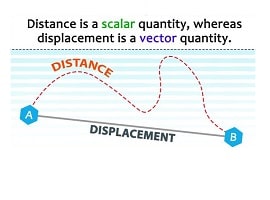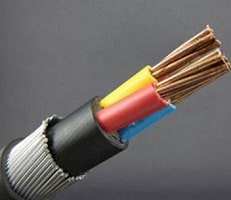Examples of Pressure
We explain that what are the examples of pressure in physics? Pressure is the force exerted on a certain area . The most common example is the weight of the human body acting on the area covered by the feet. The pressure is present around us, since everything that is on the earth’s surface exerts a force (F) due to its own mass (m) and the acceleration of gravity (g).
Pressure formula
The main relationship used to define pressure is the division of force by area:
P = F / A
This formula is generally applied when the body is solid , has a known weight (W), and occupies a measurable area (A). Like a car on a platform, or an exercise machine on a gym floor. Only then could its exact pressure be known. For this purpose the formula is used:
P = W / A
Where:
- P: pressure exerted by the solid body
- W: weight or force exerted by the solid body
- A: area covered by the solid body
For example:
The pressure exerted by a body weighing 200 N on an area of 3.5 m 2 is:
P = (200N) / (3.5m 2 )
P = 57.14 N / m 2
However, since not all matter is solid, sometimes it is not possible to know the area that it covers, so several ways of knowing the pressure arise.
Pressure types
The three physical states of matter, solid, liquid and gas, are capable of exerting pressure. For each of them, the following considerations are taken:
- Solid – must have a known weight and comprise a measurable area.
- Liquid: it must be at rest, contained in a container of any geometric shape. It is enough to be able to measure the height that it reaches in it, from the bottom.
- Gaseous: must be inside a container of constant volume.
For these observations and to improve measurement and calculations with pressure, there are various types of pressures:
- Hydrostatic pressure
- Gauge pressure
- Atmospheric pressure
- Absolute pressure
Hydrostatic pressure
It is exerted by liquids when they are at rest inside a container. No matter what form it takes, only three pieces of information should be known:
- Liquid density (ρ)
- Value of the acceleration of gravity (g = 9.81 m / s 2 )
- The vertical distance that the liquid comprises (h)
It is calculated with:
P H = ρ * g * h
If it is several different liquids, these will be naturally located in layers, due to the difference in their densities . The densest (heavy) will be at the bottom and the least dense (lightest) at the top. The total hydrostatic pressure will be the sum of all the individual ones.
The Hydrostatic Pressure of Water (H 2 O), if it has a density of 998.5 Kg / m 3 and covers a height of 3 meters in the container that contains it, is:
P H = (998.5 Kg / m 3 ) * (9.81 m / s 2 ) * (3 m)
P H = 29385.85 Kg / m 2 = 29385.85 Pa
Gauge pressure
It is exerted by gases that are in a closed container, which can be from a tank to a car tire. All gas covers the entire volume of any container, because the distances between its particles are enormous and they are free, until they collide with the walls inside.
This pressure will depend on the temperature and the amount of gas that is introduced, for the following:
- Higher temperature is higher kinetic energy in the gas particles, which will hit the inner wall harder.
- Greater amount of gas will be greater number of collisions between particles and against the container, which will generate more pressure as well.
There are already calibrated devices for measuring gauge pressure, called manometers . These have a dial with a needle or hand that indicates the pressure inside the tank or tire, in units like psi (pounds over square inch) or kgf / cm 2 (kilograms force over square centimeter), for example.
There are also the U-type manometers , with two open columns, and filled with a measuring liquid. One of them is connected to the pressure source and the other is left open to the environment (at atmospheric pressure). The pressure source will exert a thrust on one end. The liquid will shift to compensate. The difference in heights between the menisci will be the Gauge Pressure, in terms of centimeters of the liquid.
Atmospheric pressure
It is the one exerted by all the gases present in the atmosphere, on the earth’s surface. It was determined by Torricelli when he built his barometer with a glass column and a bucket of mercury. Its standard value in millimeters of mercury is: P atm = 760mmHg , but the most frequent units used are Pascals, and it is worth P atm = 101325 Pa .
It varies depending on the height at which the measurement point is located. In higher mountains, there will be a smaller column of air pressing down, so the atmospheric pressure will be lower. On the other hand, in the depths of a cave or at the bottom of a pit there is a longer column of air exerting its force, so there will be a higher atmospheric pressure.
For example, the atmospheric pressure at the top of Mount Everest is 253mmHg, while at sea level it is 760mmHg.
Absolute pressure
It is the pressure that results from adding the atmospheric pressure , always present, to the measure or calculated. For example:
- Absolute pressure = Hydrostatic pressure + Atmospheric pressure ( P = P H + P atm )
- Absolute pressure = gauge pressure + atmospheric pressure ( P = P man + P atm )
Absolute pressure is the total and real pressure at which the fluid is, and is used as experimental data to make calculations of physical and chemical phenomena.
For example:
The absolute pressure of water that exerts a hydrostatic pressure of 29385.85 Pa in an open container that receives an atmospheric pressure of 101 325 Pa is:
P = Patm + Pman
P = 101325 Pa + 29385.85 Pa
P = 130710.85 Pa
Pressure measurement units
In the International System of Units, Pressure is measured in the following units:
- Newton over square meter (N / m 2 ) .
- Pascal (Pa) , which is the same, a summarized form of the N / m 2 .
- Atmospheres (atm), whose reference is the Pressure exerted by atmospheric gases on the earth’s surface: 1 atmosphere.
- Millimeters of Mercury (mmHg) , based on Evangelista Torricelli’s experiment, who invented the barometer, an instrument for measuring atmospheric pressure.
In the English System of Units, Pressure is measured in the following units:
- Pounds per square inch (lb / in 2 ) , which are the units used for the calibration of automotive tires. Also, based on their English name: “pounds square inches”, they are assigned the abbreviation ” psi “.
Pressure variation with conditions
The Pressure in a system will have a variation according to the conditions that exist: Temperature and Volume. This variation is most notable in gaseous systems.
Temperature: When the Temperature Increases , the gas agitation increases, hitting the particles against the tank walls with more intensity, so that the Pressure Increases . When the Temperature Decreases , the gas molecules rearrange and compact together, Decreasing the Pressure .
Volume: When the Volume Increases , the gas molecules disperse, exerting a lesser force on each unit area. The decreases pressure . On the other hand, when the Volume Decreases , the gas molecules have less room to travel, so they start to bounce with more frequency and force. Therefore, the Pressure Increases .
Examples of Pressure
1.- The Pressure exerted by a body with 300 N of weight on 2.5 m 2 of Area is:
P = F / A
P = (300 N) / (2.5 m 2 )
P = 120 Pa
2.- The Pressure exerted by a body with 15000 N of weight on 0.5 m 2 of Area is:
P = F / A
P = (15000 N) / (0.5 m 2 )
P = 30000 Pa
3.- The Pressure exerted by a body with 100000 N of weight on 12.30 m 2 of Area is:
P = F / A
P = (100000 N) / (12.30 m 2 )
P = 8130.08 Pa
4.- The Pressure exerted by a body with a weight of 30 N on an Area of 10 m 2 is:
P = F / A
P = (30 N) / (10 m 2 )
P = 3 Pa
5.- The Pressure exerted by Water, with a Density of 990 Kg / m 3 and a height of 0.30 m is:
P H = ρ * g * h
P H = (990 Kg / m 3 ) * (9.81 m / s 2 ) * (0.30 m)
P H = 2913.57 Pa
6.- The Pressure exerted by Mercury, with a Density of 13,600 Kg / m 3 and a height of 0.50 m is:
P H = ρ * g * h
P H = (13600 Kg / m 3 ) * (9.81 m / s 2 ) * (0.50 m)
P H = 66708 Pa
7.- The Pressure exerted by Water, with a Density of 999 Kg / m 3 and a height of 0.80 m is:
P H = ρ * g * h
P H = (999 Kg / m 3 ) * (9.81 m / s 2 ) * (0.80 m)
P H = 7840.15 Pa
8.- The Pressure exerted by the Oil, with a Density of 920 Kg / m 3 and a height of 0.30 m is:
P H = ρ * g * h
P H = (920 Kg / m 3 ) * (9.81 m / s 2 ) * (0.30 m)
P H = 2707.56 Pa
9.- The atmospheric pressure at sea level is 101810 Pascals.
10.- The standard atmospheric pressure is 101325 Pascals.

